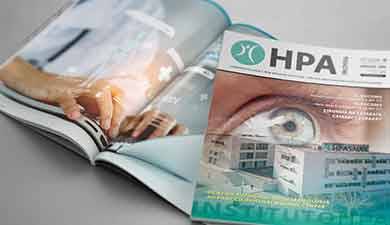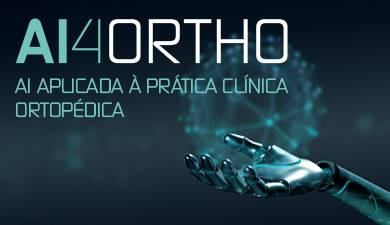
Dr. Hugo Nascimento
Dentist
The (he)art of a smile…
HPA Magazine 21 // 2024
If the eyes are the mirror of the soul, our smile is how we present ourselves to the world, to our family, friends, or strangers.
Cosmetic dentistry has evolved exponentially, a result of the growing awareness and perception on the part of patients who are increasingly self-conscious, actively seeking solutions to improve their smiles, whether for purely aesthetic reasons or functional ones.
However, both aesthetics and function always work together, and one is the result of the other, contributing to improved self-esteem and confidence.

Every day we are bombarded with "miraculous solutions," as if science were equipped with a magic wand; words and expressions like "veneers," "contact lenses," "digital smile design," "implants," "crowns," "overlays" are a constant presence in all media.
Indeed, we live in very exciting times regarding advances in medicine, and dentistry is no exception. The evolution of technology and materials provides the dentist with tools to give the best response and solution to the desires and aspirations of our patients.
However, as the famous line from a movie goes, 'with great power comes great responsibility,' it is up to the dentist to choose the most suitable treatment for each case because if each patient is unique, so should be their smile. High ethical standards should accompany high aesthetic and nature-mimicking standards.
At Dental HPA, we want our patients to hear 'what beautiful teeth you have' and not 'you have a good dentist,' as the latter phrase indicates that our smile is not naturally beautiful and attractive.
Thus, in the field of cosmetic dentistry, art and science are inseparable. And it all begins with a careful assessment of the patient as a whole.
Among the treatments currently available, teeth whitening is one of the least invasive options, allowing for surprising results when applied correctly, either alone or in conjunction with other techniques. It is a relatively simple procedure and can be performed in the office or at home, always under medical supervision (Figure 1).
Another option is cosmetic restorations, which can be used to correct minor flaws or imperfections in the teeth, such as cavities, fractures, or dental wear (Figure 2).
The dental veneer in ceramics, or dental contact lenses, are thin ceramic laminates that are adhered to the tooth structure, allowing correction of shape, color, and even slight dental misalignments in a predictable and conservative manner. They can be used only on one tooth (Figure 3) or be part of a more comprehensive treatment involving multiple teeth (Figure 4).
The same applies to crowns; when the remaining tooth structure contraindicates the placement of a veneer, crowns can be one of the options with better indication to enhance the smile, restoring the function and natural appearance of the teeth. It is not uncommon to combine different techniques (Figure 5 and Figure 6).
Implant-supported rehabilitations are indicated for more complex and extreme cases where the absence of teeth or their prognosis prevents the use of the techniques described so far. Implant-supported rehabilitations can address the absence of a single tooth (Figure 7) or, at the limit, restore the entire lost dentition, known as implant-supported full rehabilitations (Figure 8).
This treatment option involves the placement of dental implants, usually made of titanium, with the possibility of using zirconia implants.
These implants are strategically placed in predetermined positions with maximum detail and precision. They function as "anchors" or a support base onto which we can securely attach teeth or bridges, providing a completely new and functional smile (Figure 9).
In conclusion, aesthetic dentistry offers various treatment options to improve the appearance of teeth and provide a more beautiful and harmonious smile. It is the responsibility of the dentist and the multidisciplinary team to assess each case individually and select the most suitable treatment option for each patient.
It is crucial to plan and execute the treatment with excellence and care, ensuring the satisfaction and happiness of our patients.











